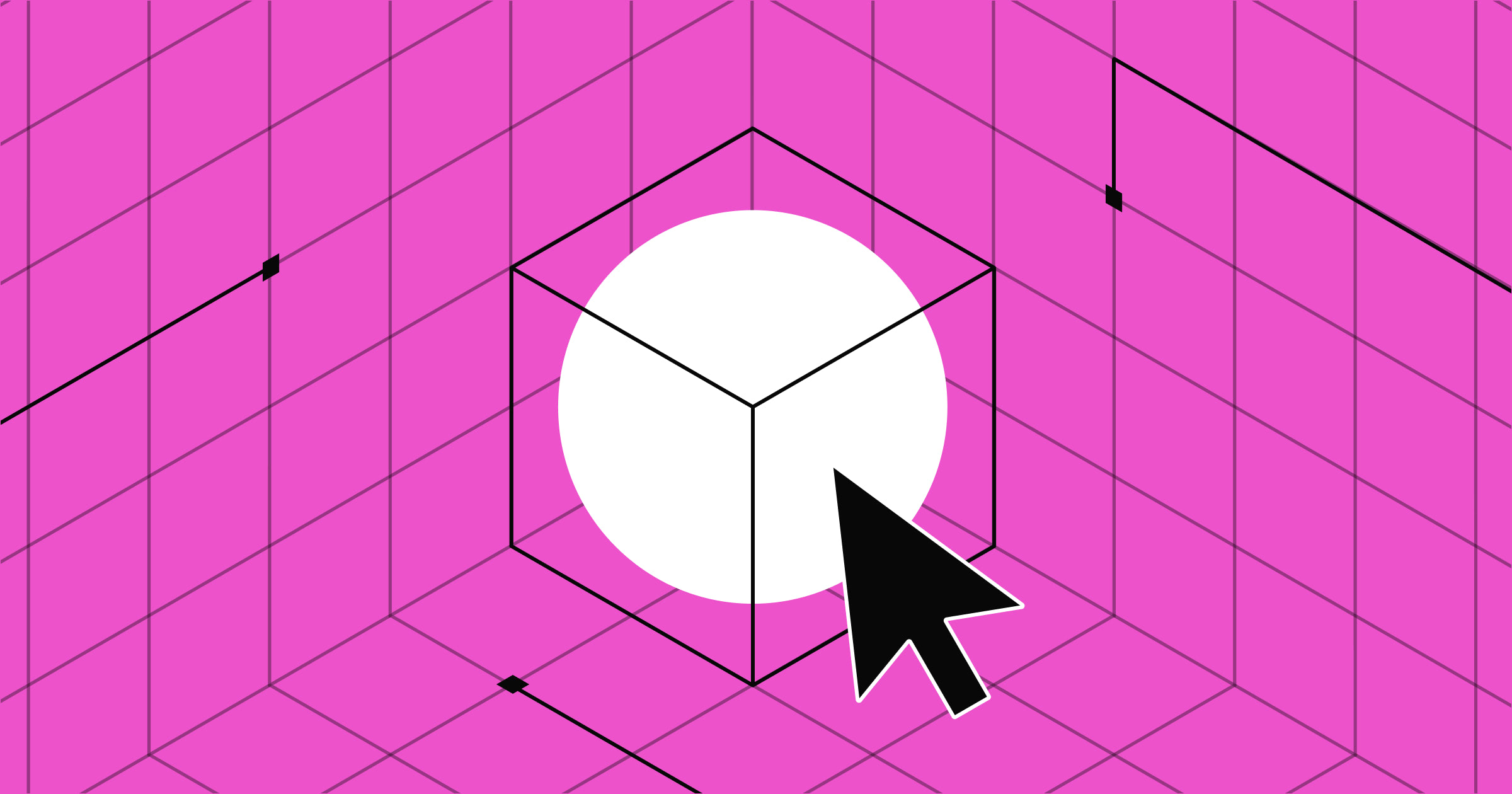Unlock the full potential of your website with the right mix of design and development expertise.
While web design and web development often share the spotlight, they each play distinct, vital roles in website creation. Web designers craft the visuals and layout, setting the aesthetic tone, while developers breathe life into these designs, ensuring seamless functionality and interactivity. Together, they harmonize art and technology to deliver user-centric digital experiences that resonate with audiences.
Understanding the unique skills and strengths each brings empowers you to leverage their expertise effectively. Let’s explore the nuances between web designers and developers and discover how they can elevate your web design projects.
What are web designers, and what do they do?
Web designers shape the layout and feel of webpages. They create the overall aesthetic, ensuring sites have visual appeal and intuitive navigation.
Key responsibilities of web designers include:
- Conceptualizing designs: Imagining the look and feel of a website based on brand goals, value proposition, and target audience
- Crafting layouts: Determining the placement and organization of various design elements, including text, multimedia, and interactive features
- Choosing colors and fonts: Picking color palettes and typefaces that enhance a company’s branding and resonate with their audience
- Designing visual elements: Crafting logos, buttons, icons, and other graphics to elevate website appearance
- Ensuring responsiveness: Creating website designs that adjust smoothly across devices and screen sizes for improved accessibility
- Prototyping and wireframing: Making mockups and blueprints to showcase and refine website layout and functionality before starting development
- Collaborating and maintaining the site: Partnering with web developers, marketing teams, and stakeholders to implement designs correctly and address any design-related issues
- Staying current: Monitoring emerging design trends and technologies to deliver fresh, user-centered designs
What are the different types of web designers?
Web design spans various specializations, each contributing to the broader design landscape. While their roles often intersect, understanding each type’s unique strengths and responsibilities ensures more effective collaboration, allowing teams to leverage individual expertise and avoid potential overlaps or gaps in the design process.
Here are the three different kinds of web designers.
UX designers
User experience (UX) design focuses on the heart of digital interactions: the user. It’s a multidisciplinary approach to crafting intuitive and aesthetically pleasing interfaces. By prioritizing user needs, UX design provides experiences that draw users in, encourage deeper exploration, and lead them toward desired actions, such as making a purchase.
UX designers dig deep, leveraging market and user research, usability testing, and qualitative and quantitative feedback to craft designs grounded in real-world insights. This data-backed approach ensures that every touchpoint — from landing page to checkout — is smooth and meaningful, enhancing customer satisfaction and driving conversions.
UI designers
User interface (UI) designers tailor websites’ and applications’ visual and tactical aspects, ensuring beauty and functionality. They shape:
- Input control elements: Buttons, dropdown menus, text fields, checkboxes, and contact forms to facilitate direct user interaction and data input
- Navigational elements: Icons, tags, sliders, image carousels, and search bars to guide users seamlessly through the content and enhance site flow
- Information-related elements: Notifications, alerts, message boxes, chatbots, and progress bars to provide users with feedback and facilitate clear communication
These design elements enable smooth and intuitive user interactions, enhancing engagement and fostering positive experiences. Although some people use UX and UI interchangeably, they’re distinct design roles. UX focuses on the overall user experience, while UI emphasizes specific visual design components — but both work together to create aesthetically pleasing and functional websites and apps.
Visual designers
Visual designers blend the principles of both UX and UI design to prioritize usability and aesthetics, elevate user engagement, and ensure visual coherence. By strategically organizing design elements to establish clear visual hierarchies, these designers capture audience attention and guide user journeys. They also leverage color theory, optimize readability, and fine-tune web element placement to enhance accessibility and create a more intuitive user experience.
Most visual designers use dedicated software and programs, including tools like Adobe Photoshop and Illustrator, Figma, and Sketch. Additionally, they may use website-building platforms and content management systems (CMS) like Webflow to streamline their workflow.
Who are web developers, and what do they do?
Web developers’ skills bring digital interfaces to life, transforming design concepts into interactive websites and dynamic online experiences.
A web developer’s key tasks include:
- Building websites from scratch: Translating design mockups into live, functional websites using development languages like HTML, CSS, and JavaScript
- Ensuring cross-browser compatibility: Designing websites that display and function consistently across various browsers, such as Google Chrome, Mozilla Firefox, Safari, and Microsoft Edge
- Implementing responsive design: Adapting designs and layouts to create websites and apps that adjust seamlessly to different devices and screen dimensions
- Optimizing performance: Boosting website speed and responsiveness by refining code, minimizing file sizes, and selecting optimal web hosting services
- Testing regularly: Methodically monitoring and evaluating website performance to spot and rectify issues such as slow-loading web components and potential security risks
- Troubleshooting and maintenance: Diagnosing and resolving technical issues while keeping sites updated with the latest software and technologies



















Get started for free
Create custom, scalable websites — without writing code. Start building in Webflow.
What are the different types of web developers?
Web developers possess diverse skill sets and often specialize in specific areas to build online experiences. Here’s how these individual strengths can come together to create cohesive and engaging websites.
Front-end developers
Front-end web development brings the visual designs and interactions crafted by designers to life. Front-end developers use HTML (HyperText Markup Language) to present content, CSS (Cascading Style Sheets) to style elements, and JavaScript to create interactive and dynamic websites. Their work directly influences the client side — how users experience a website — and ensures it loads correctly, responds to user interactions, and remains consistent across different devices.
Back-end developers
Focusing on the behind-the-scenes server side, back-end developers use programming languages such as Structured Query Language (SQL), Hypertext Preprocessor (PHP), Ruby, and Java to manage databases, ensure secure data transactions, and handle user requests. This infrastructure powers websites and provides the stability and functionality they need to perform reliably, making every user interaction seamless and efficient.
Full-stack developers
Full-stack developers possess both front-end and back-end development skills and are adept at tasks across both ends of development, like implementing user interfaces and managing server operations. They offer a comprehensive approach to web development. Their broad expertise and versatility prove invaluable to businesses, as full-stack developers can navigate and perform every aspect of a website’s creation and optimization, ensuring optimal functionality and user experiences from start to finish.
What are the differences between web designers and web developers?
Web designers and developers are both essential in creating and maintaining a website — remove one, and you can’t build visually appealing and functional websites. At the same time, both have different roles and responsibilities. Here’s how they differ:
Web designers
- Responsible for the creative aspect of building websites, such as conceptualizing designs and making prototypes
- Primary goal is to ensure a website or digital interface is visually appealing, navigable, intuitive, and user-friendly
- Convert ideas and concepts into designs, wireframes, and mockups
- Three different types:
- UX designers
- UI designers
- Visual designers
- Regularly monitor design trends to update websites with new color palettes, typography, and other modern visual and graphic design elements
- Use software and tools like Adobe Photoshop and Illustrator, Figma, Sketch, InVision Studio, and more
Web developers
- Responsible for the technical side of website development, such as programming, database management, and server configuration
- Primary goal is to ensure websites are functional, feature-rich, and secure
- Convert designs, wireframes, and mockups into fully functioning websites
- Three different types:
- Front-end developers
- Back-end developers
- Full-stack developers
- Regularly monitor and identify potential bottlenecks, security flaws, and maintenance issues to ensure websites run smoothly
- Use development languages like HTML, CSS, JavaScript, SQL, and PHP to program and maintain websites
How much do web designers and developers earn?
According to Glassdoor, web developers typically earn an average yearly salary of $88,209, whereas a web designer’s salary averages $70,919 annually. Senior web developers generally earn an average yearly salary of $134,132, while senior designers typically earn an average of $101,645 annually (at the time of writing).
Salaries for these roles vary widely and are influenced by location, experience, and specialization. Freelancers in both fields can adjust their rates based on project complexity, client budgets, and market demand. This flexibility leads to higher earning potential, especially for those who can identify and tap into lucrative niches or high-demand areas.
How can web designers and developers help you?
Building aesthetic websites that work well and attract visitors requires a web designer’s skills and a web developer’s technical expertise. Together, they bring a website’s vision to life, ensuring it’s both functional and visually pleasing.
If you’re considering a new career path and want to learn web design from scratch or need inspiration for your web development portfolio, the Webflow blog offers various resources to support your goals. You can also supplement your web development and design journey with — an approach where designers can access front-end workflows and vice versa.
If tutorials don’t fit your schedule, you can skip the learning curve altogether and hire freelance professionals from our worldwide community of experts for any project.

Get started for free
Create custom, scalable websites — without writing code. Start building in Webflow.


.jpeg)




.jpeg)























